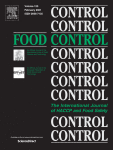View Item
- xmlui.general.dspace_homeCentros Regionales y EEAsCentro Regional Santa FeEEA RafaelaArtículos científicosxmlui.ArtifactBrowser.ItemViewer.trail
- DSpace Home
- Centros Regionales y EEAs
- Centro Regional Santa Fe
- EEA Rafaela
- Artículos científicos
- View Item
Quantitative risk assessment of listeriosis associated with fermented sausage and dry-cured pork shoulder consumption in Argentina
Abstract
The risk of acquiring listeriosis from consuming fermented sausages and dry-cured pork shoulder (capicola/bondiola) in Argentina was estimated using quantitative microbiological risk assessment. The model included data about initial prevalence and contamination level of Listeria monocytogenes, product formulation with or without a starter culture (lactic acid bacteria [LAB]), time and temperature during distribution and storage prior to consumption, and
[ver mas...]
The risk of acquiring listeriosis from consuming fermented sausages and dry-cured pork shoulder (capicola/bondiola) in Argentina was estimated using quantitative microbiological risk assessment. The model included data about initial prevalence and contamination level of Listeria monocytogenes, product formulation with or without a starter culture (lactic acid bacteria [LAB]), time and temperature during distribution and storage prior to consumption, and consumption patterns. The probability of listeriosis from fermented sausage consumption in at-risk populations was estimated with average values of <10−11 per portion consumed. The main factor associated with such probability was the use of LAB in fermented sausage production, which reduced the risk by at least three orders of magnitude. Meat mass pH during fermentation and water activity (aw) at the end of ripening were the factors having the greatest impact on the probability of listeriosis. Thus, LAB added during production, pH values < 5.1 at the end of fermentation and aw <0.93 during ripening indicated that the environment was not appropriate for L. monocytogenes development, suggesting that fermented sausages had an adequate safety level. On the other hand, the risk of listeriosis from dry-cured pork shoulder consumption was negligible, even in the most susceptible populations. Both aw level and the strict control of process temperature were the main risk factors for acquiring listeriosis. The level of protection given by the current Argentine microbiological criterion for fermented sausages and dry-cured pork shoulder (absence of L. monocytogenes in 25 g of product) would guarantee the safety of these products similarly to the <100 cfu/g cut used in other countries.
[Cerrar]

Author
Brusa, Victoria;
Prieto, Monica;
Campos, Carmen A.;
Epszteyn, Sergio;
Cuesta, Alicia;
Renaud, Viviana;
Schembri, Gustavo;
Vanzini, Mónica;
Michanie, S.;
Leotta, Gerardo Anibal;
Signorini Porchiett, Marcelo Lisandro;
Fuente
Food Control : 107705 (Available online 17 October 2020)
Date
2020-10
Editorial
Elsevier
ISSN
0956-7135
Formato
pdf
Tipo de documento
artículo
Palabras Claves
Derechos de acceso
Embargado
 Excepto donde se diga explicitamente, este item se publica bajo la siguiente descripción: Creative Commons Attribution-NonCommercial-ShareAlike 2.5 Unported (CC BY-NC-SA 2.5)
Excepto donde se diga explicitamente, este item se publica bajo la siguiente descripción: Creative Commons Attribution-NonCommercial-ShareAlike 2.5 Unported (CC BY-NC-SA 2.5)

